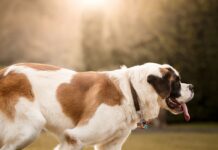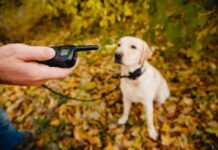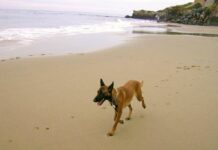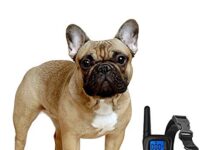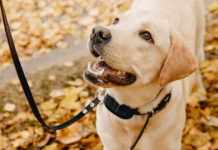Taking your elderly dog for walks is a great way to keep them active and helps maintain their physical and mental well-being. However, you may wonder if you need a special harness for your senior furry friend.
This article will explore the importance of using a suitable harness for older dogs and discuss how it can improve their walking experience. From providing extra support and stability to ensuring their comfort and safety, a special harness can make a difference for your aging canine companion.
So, let’s delve into the topic and discover the benefits of investing in the right equipment for your elderly dog’s walks. As loving and responsible pet owners, we want to ensure our elderly dogs can stay active and enjoy their daily walks.
One way to support their mobility and overall comfort is by using a special harness for elderly dogs. In this article, we will explore the benefits of using a special harness, the different types available, important considerations when choosing one, how to measure and fit a harness properly, additional features to look for, training tips for walking an elderly dog, other considerations to keep in mind, and the importance of consulting a veterinarian. Let’s dive in and learn more about the world of special harnesses for our four-legged seniors!
Benefits of Using a Special Harness for Elderly Dogs
Improved Stability
One of the key advantages of using a special harness for elderly dogs is improved stability. As dogs age, they may experience a decline in balance and coordination. This can make it challenging to maintain their footing, especially on uneven terrain or slippery surfaces. A special harness provides additional support around the dog’s torso, helping to stabilize their movements and prevent falls. With a harness, we can ensure that our furry friends can walk more confidently, reducing the risk of accidents.
Reduces Strain on Joints
Another significant benefit of using a special harness for elderly dogs is reducing joint strain. Just like humans, dogs can develop arthritis and other age-related joint issues. Pulling on a regular collar or leash can exacerbate the pain and discomfort in their joints. On the other hand, a harness distributes the pressure more evenly across the dog’s body, minimizing strain on their joints. This is especially important for dogs with hip dysplasia, as a harness can help alleviate their discomfort and improve their quality of life.
Supports the Back and Spine
As our dogs age, their back and spine become more susceptible to injury. The spinal column naturally degenerates over time, making it more fragile and prone to damage. Using a special harness that provides support to the back and spine can help protect our furry friends from serious injuries, such as herniated discs or spinal fractures. With the added support of a harness, we can ensure that our elderly dogs can continue to enjoy their walks without putting excessive strain on their backs.
Enhanced Control and Safety
Walking an elderly dog with a regular collar and leash can be challenging, especially if they tend to pull or become easily excited. A special harness offers enhanced control and safety during walks. With the harness securely fastened around their body, we have more leverage and control over their movements. This can help prevent them from darting off, chasing after squirrels, or getting tangled in their leash. Additionally, a harness usually has multiple attachment points for leashes, allowing for more control and flexibility while walking.
Types of Special Harnesses for Elderly Dogs
Several special harnesses are available for elderly dogs, each offering unique features and benefits. Let’s explore some of the most commonly used ones:
Front-clip Harness
A front-clip harness has the attachment point for the leash located in the front, on the dog’s chest. This type of harness is effective for dogs that tend to pull during walks, as it redirects their forward momentum back toward us. The front-clip design can help reduce pulling and make walks more manageable, especially for elderly dogs with difficulty controlling their impulses.
Back-clip Harness
As the name suggests, a back-clip harness has an attachment point for the leash on the back of the dog. This type of harness is simple and easy to use, making it a popular choice for many pet owners. Back-clip harnesses provide reasonable control and suit dogs with a calm, well-behaved walking style. They may be less effective for dogs that tend to pull or have a more excitable temperament.
No-pull Harness
A no-pull harness is specifically designed to discourage dogs from pulling. It usually has a front attachment point and additional features like chest straps or martingale loops that tighten slightly when the dog pulls. The gentle tightening sensation serves as a reminder for the dog to walk calmly by our side. No-pull harnesses can be an excellent choice for elderly dogs who tend to pull or need reminders to stay close during walks.
Step-in Harness
A step-in harness is designed for easy and quick application. Instead of slipping the harness over the dog’s head, we can have them step into the harness, secure it around their body, and fasten it. Step-in harnesses are particularly useful for elderly dogs with mobility issues or who dislike having anything put over their heads. They offer convenience and a secure fit while minimizing stress during harnessing.
Vest Harness
A vest harness typically has a padded chest plate and straps around the dog’s body. This type of harness provides additional comfort and support, making it an excellent option for elderly dogs with sensitive skin or needing extra stability. Vest harnesses often come in various sizes and can be adjusted to ensure a snug and secure fit for our furry friends.
Support Harness
A support harness, sometimes called a mobility harness, is specifically designed for dogs with significant mobility issues, such as muscle weakness or paralysis. These harnesses have additional handles or support slings that allow us to help lift and support our dogs during walks or while going upstairs. Support harnesses can be helpful for elderly dogs who require extra assistance and cannot bear their total weight on their own.
When choosing a special harness for our elderly dogs, we must consider our furry friend’s specific needs and characteristics. Let’s explore some crucial considerations to keep in mind.
Considerations When Choosing a Special Harness
Dog’s Size and Breed
One of the first considerations when choosing a special harness is our dog’s size and breed. Different harnesses are designed to accommodate various body shapes and sizes. Measuring our dog correctly is essential, and referring to the manufacturer’s sizing guide to ensure a proper fit. Harnesses with wider straps and more substantial construction may be more suitable for larger breeds, while smaller breeds may benefit from lighter and more flexible designs.
Ease of Use
Another important consideration is the ease of use of the harness. We want a harness that is simple to put on and take off, especially for elderly dogs that may have limited mobility or patience. A step-in harness or one with quick-release buckles can make the harnessing process more efficient and stress-free for us and our furry friends.
Adjustability
A harness that offers adjustability is crucial for achieving a proper fit. Dogs come in various sizes and shapes, so having adjustable straps allows us to customize the harness to our dog’s unique proportions. This is particularly important for elderly dogs that may have lost muscle tone or gained weight as they age. An adjustable harness ensures a snug and secure fit, providing maximum comfort and support.
Material and Durability
The material and durability of a special harness are essential factors to consider. We want a harness made from high-quality materials that can withstand regular use and last long. Look for harnesses made from durable nylon or polyester with reinforced stitching. These materials are both sturdy and comfortable for our canine companions. Additionally, consider whether the harness is water-resistant or easy to clean, as this can make a significant difference in maintaining its quality over time.
Comfort
Comfort should be a top priority when choosing a special harness for our elderly dogs. Look for harnesses with padded chest plates, straps, or linings to prevent chafing or rubbing on their skin. The harness should fit snugly but not too tightly, allowing for comfortable movement and breathing freedom. Opt for a breathable and lightweight harness, particularly during warmer months or for dogs prone to overheating.
Veterinary Recommendations
It’s always a good idea to consult our veterinarian when choosing a special harness for our elderly dogs. They can provide valuable insight and recommendations based on our dog’s needs, existing health conditions, or orthopedic concerns. Veterinarians have a wealth of knowledge and experience and can recommend harnesses suitable for our furry friends’ age, size, and individual circumstances.
How to Measure and Fit a Special Harness
We must measure our dog accurately and make necessary adjustments to ensure that the special harness fits properly and provides the intended benefits. Let’s explore how to measure and fit a special harness for our elderly dogs.
Measurements and Sizing
Start by measuring our dog’s circumference, the widest part of their chest and ribcage. Use a soft measuring tape or a piece of string that can be measured later. Wrap the tape or string around our dog’s chest behind their front legs and record the measurement. This measurement will help determine the appropriate size of the harness based on the manufacturer’s sizing guide. It’s essential to follow the harness manufacturer’s specific sizing instructions, as sizing can vary between brands.
Proper Fit and Adjustments
Once we have determined the correct size of the special harness, we can proceed to fit it onto our dog. Place the harness on their back and fasten any buckles or closures securely. The harness should fit snugly but not be overly tight. We should be able to fit two fingers comfortably between the harness and our dog’s body. If the harness is too loose, it may slide around or come off; if it’s too tight, it may constrict their movement or cause discomfort. Make any necessary strap adjustments until the harness fits securely and comfortably.
Checking for Comfort and Range of Motion
After fitting the special harness onto our dog, it’s crucial to check for their comfort and range of motion. Observe their behavior and body language to ensure they are not exhibiting signs of distress or discomfort. Please encourage them to walk or move around while wearing the harness and pay attention to any limitations in their mobility. A properly fitted harness should allow elderly dogs to move comfortably and naturally while providing the necessary support and stability.
Additional Features to Look for in a Special Harness
While the primary purpose of a special harness for elderly dogs is to provide support and comfort, there are additional features that can enhance their safety and overall walking experience. Let’s explore some features to look for when choosing a special harness.
Reflective Strips or Piping
Walking our elderly dogs during low-light conditions can pose risks, as they may be less visible to drivers or pedestrians. A special harness with reflective strips or piping can significantly improve our dog’s visibility and safety. These reflective features reflect light to its source, making our furry friends more visible from a distance. Whether walking early in the morning or late in the evening, a harness with reflective elements can help keep our furry friends safe during their walks.
Handle for Lifting Support
For elderly dogs that require additional assistance, a special harness with a handle can be highly beneficial. The handle provides a secure grip, allowing us to support and lift our dogs comfortably when needed. This feature is handy for dogs with mobility issues, recovering from surgery, or struggling with stairs or curbs. A handle can give us the extra leverage necessary to help our furry friends easily navigate their surroundings.
Padded Chest and Straps
To maximize our dog’s comfort during walks, a special harness with padded chest plates and straps can be a great choice. The padding adds an extra cushioning layer and helps prevent chafing or rubbing on their skin. This is especially important for elderly dogs with sensitive skin or those prone to skin irritations. A harness with padded elements ensures that our furry friends can enjoy their walks without discomfort or irritation.
Attachment Points for Leashes
Having multiple attachment points for leashes can be advantageous regarding control and flexibility during walks. Some special harnesses have front and back attachment points, allowing us to choose the most appropriate option for our dog’s behavior and walking style. The front attachment point is practical for dogs that tend to pull, redirecting their forward momentum. The back attachment point provides a conventional attachment that works for most dogs.
Training Tips for Walking an Elderly Dog
Walking an elderly dog may require a slightly different approach than walking a younger, more energetic dog. We must tailor our walking routine to accommodate their specific needs and abilities. Let’s explore some training tips for walking an elderly dog.
Slow and Gentle Introduction
When introducing a special harness to our elderly dogs, taking it slow and being patient with them is essential. Some dogs may be initially resistant or uncomfortable with wearing the harness. Start by allowing our dogs to sniff and inspect the harness before gently putting it on them. Offer praise and treats as positive reinforcement to create positive associations with the harness. Gradually increase the duration of wearing the harness to help them become more accustomed.
Shorter and More Frequent Walks
Elderly dogs may not have the same stamina level as they once did, so it’s essential to adjust the duration and frequency of their walks accordingly. Instead of long, strenuous walks, opt for shorter, more frequent daily walks. This allows our furry friends to still get their exercise and mental stimulation without overexerting themselves. Please pay attention to their body language and energy level during walks, and be responsive to their needs.
Pacing and Rest Breaks
Walking at a slower pace can significantly benefit elderly dogs. Slow and steady walks help reduce the risk of injury and allow our furry friends to explore their surroundings comfortably. Additionally, incorporate regular rest breaks during walks. Encourage our dogs to rest and drink water to prevent them from becoming too exhausted or dehydrated. Rest breaks also allow them to enjoy leisurely walks in their environment.
Positive Reinforcement
Positive reinforcement is a valuable tool when walking our elderly dogs. Rewarding them with treats, verbal praise, and affection helps reinforce desired behaviors and encourages them to walk calmly and stay close during outings. Use treats specifically designed for older dogs or soft and easily digestible treats to avoid digestive issues. Focus on reinforcing good walking manners and keeping the training sessions relaxed and enjoyable for us and our furry friends.
Observe Your Dog’s Comfort Level
Always pay close attention to our dog’s comfort level during walks. Monitor their body language, breathing, and energy levels to ensure that they are not experiencing any discomfort or excessive strain. If our dog shows signs of fatigue, pain, or distress, we must stop and assess the situation. Choose routes and distances suitable for their current physical condition, and be mindful of any signs of discomfort or fatigue.
Other Considerations for Walking an Elderly Dog
While using a special harness can significantly improve the walking experience for our elderly dogs, there are other essential considerations to remember. Let’s explore some additional factors to consider when walking our furry seniors.
Avoiding Extreme Weather
Extreme weather conditions can be particularly challenging for elderly dogs. Whether it’s extreme heat or cold, they may have a more difficult time regulating their body temperature. It is crucial to adjust our walking routine based on the weather conditions and prioritize their comfort and safety. Consider walking during more excellent times, providing shade or protective clothing when it’s hot, and using boots or paw wax in icy or snowy conditions.
Choosing Appropriate Walking Surfaces
Choosing walking surfaces can affect our elderly dogs’ comfort and stability. Smooth or slippery surfaces, such as tile or laminate flooring, may pose a risk of slipping and falling. Opt for walking routes with a texture that provides more traction, such as grass or packed dirt. Avoid surfaces like gravel or uneven pavement that could cause discomfort or pain when our furry friends step on them. Minimizing potential hazards and providing a safe and comfortable walking environment is essential.
Avoiding Overexertion
We must be mindful of our elderly dogs’ energy levels and physical limitations to avoid overexertion. Pushing them beyond their limits can lead to exhaustion, increased pain, or injuries. If our dogs show signs of fatigue or struggle to keep up, it’s essential to slow down, take more frequent breaks, or shorten the walks. Listen to their cues and respect their boundaries to ensure their well-being.
Bringing Water and Treats
Hydration is crucial for our elderly dogs, especially during walks. Always bring a water bottle and a portable bowl to provide them with fresh water during rest breaks. Offer water to our furry friends regularly, especially in warm weather or when walking for extended periods. Additionally, bringing small treats can help motivate our dogs and reward them for their excellent behavior during walks. Choose treats that are appropriate for their age and dietary needs.
Monitoring for Any Changes in Health
Regularly monitoring and observing our elderly dogs’ overall health is essential, especially as they age. Watch for changes in behavior, mobility, appetite, or bathroom habits. We must consult with our veterinarian immediately if we notice any unusual or concerning symptoms. Our furry friends’ health needs may evolve, and addressing health concerns is critical to ensuring their well-being.
Consulting a Veterinarian
When it comes to the health and well-being of our elderly dogs, it’s essential to consult with our veterinarian. They are the best resource for guidance and expert advice tailored to our dog’s needs and circumstances. Let’s explore why consulting a veterinarian is crucial when using a special harness for our elderly dogs.
Discussing Your Dog’s Specific Needs
Every dog is unique, and our veterinarian can help us understand our dog’s specific needs and challenges. By discussing our dog’s age, breed, weight, and any existing health conditions, our veterinarian can provide valuable insights into which type of special harness would be most suitable. They can also advise adapting our walking routine to optimize our dog’s comfort and safety.
Seeking Recommendations on Harnesses
With an array of special harnesses available on the market, it can be overwhelming to choose the right one for our elderly dogs. Our veterinarian can provide recommendations and suggestions based on their knowledge and expertise. They may have specific brands or models that they have had success with in the past or that have been highly recommended by other pet owners. Their guidance can help us make an informed decision and ensure that we invest in a harness that meets our dog’s needs.
Addressing Any Underlying Health Issues
Our veterinarian can help identify and address any underlying health issues impacting our dog’s ability to walk comfortably. They can conduct a thorough physical examination, assess their joints and mobility, and recommend necessary interventions or treatments. By addressing any underlying health issues, we can ensure that our elderly dogs are as comfortable and mobile as possible during their walks.
Inquiring About Exercise Requirements
Different dogs have varying exercise requirements based on age, breed, and overall health. Our veterinarian can guide our dog’s walk duration, intensity, and frequency. They can help us establish a safe and effective exercise routine supporting our dog’s health and well-being. Regular check-ups with our veterinarian are essential to monitor our dog’s changing exercise needs as they age.
Conclusion
Walking our elderly dogs is a beautiful way to keep them active, engaged, and happy. A special harness designed for their specific needs can significantly enhance their stability, reduce strain on their joints, support their back and spine, and enhance control and safety during walks. When choosing a special harness, we must consider our dog’s size and breed, ease of use, adjustability, material and durability, comfort, and veterinary recommendations.
Proper measurement and fitting ensure the harness provides maximum support and comfort for our furry friends. Additional features such as reflective strips, lifting handles, padded elements, and multiple attachment points can contribute to a safer and more enjoyable walking experience. Training tips and careful considerations, such as choosing appropriate walking surfaces and avoiding overexertion, cater to our elderly dogs’ specific needs.
Ultimately, consulting with our veterinarian ensures we provide the best care for our furry seniors, addressing their unique needs and ensuring their overall health and well-being. By investing in a special harness and making the necessary adjustments to our walking routine, we can continue to enjoy the company of our beloved elderly dogs on many more safe and enjoyable walks together.

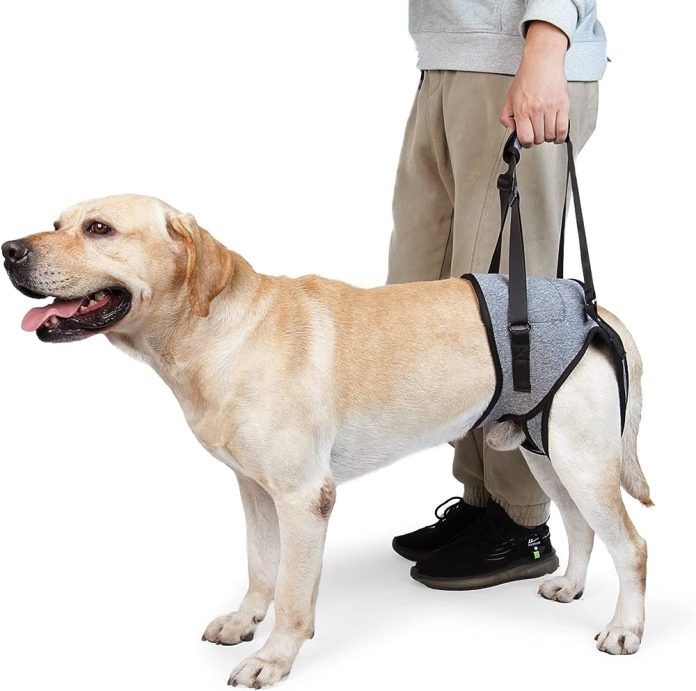
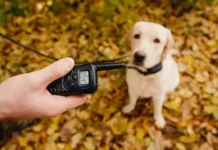
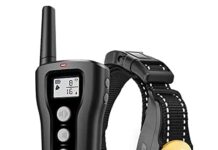
![Petrainer Dog Training Collar [100% Waterproof] Petrainer Dog Training Collar](https://mydogtrainingcollar.com/wp-content/uploads/2019/03/Petrainer-Dog-Training-Collar-218x150.jpg)
